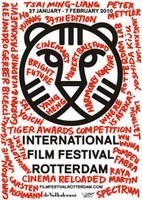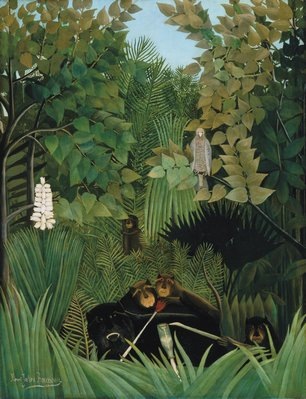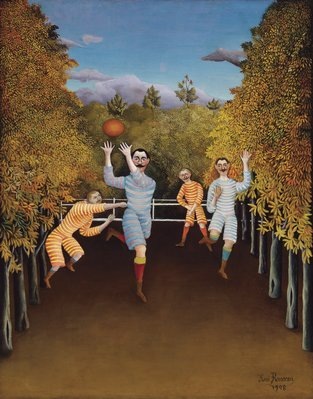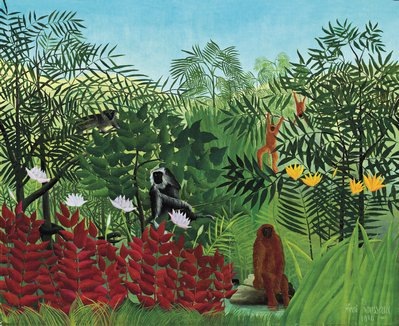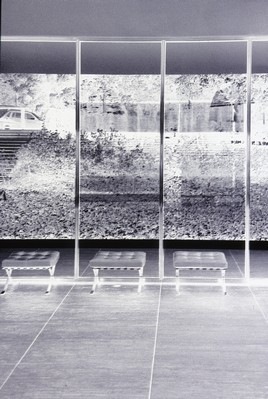
Voici la liste de l’ensemble des nominations aux Césars 2010, classées par catégorie. La 35ème cérémonie des Césars aura lieu au Théâtre du Châtelet le samedi 27 février 2010. Pour ceux et celles d’entre vous qui n’ont pas été invités à cet événement en hommage au septième art et à ses serviteurs, il ne vous reste plus qu’à retravailler votre réseau de relation pour la prochaine cérémonie afin de recevoir votre carton d’invitation. Dans l’immédiat, en vue de cette soirée du 27 février, pensez à vous organisez des maintenant en prévoyant comment réorganiser votre salon afin de rendre vous aussi hommage au cinéma comme il se doit, et donc avec style, dans un salon aménagé à cet effet, un salon digne de recevoir les images des Césars via votre poste de télévision. Vous ne manquerez pas d’avoir une pensée reconnaissante et respectueuse envers la Chaîne de télévision Canal Plus qui offre à tout un chacun, et même à vous, la possibilité de suivre l’événement en direct de son canapé. Canal Plus étant une chaîne sérieuse, elle a pris soin de parer à toute tentative de resquilleurs entendant se fonder sur leur absence d’abonnement à la chaîne payante pour s’auto absoudre de ne pas avoir suivi la cérémonie. Canal Plus a pour cela et ceux-là pris la décision de diffuser la cérémonie en clair. Pour terminer, et avant de vous laisser potasser la liste ci-dessous et pronostiquer combien de Césars remportera Un Prophète, Wanafoto ne vous demande qu’une chose : ne soignez pas ingrat envers votre sauveur et prenez donc soin d’aller aux toilettes en dehors des temps de réclames qui d’avèreront être dans un tel cas le seul moyen pour vous de signifier votre gratitude envers Canal Plus. En vous remerciant.
MEILLEUR ACTEUR
YVAN ATTAL dans Rapt
FRANÇOIS CLUZET dans A l’Origine
FRANÇOIS CLUZET dans Le dernier pour la route
VINCENT LINDON dans Welcome
TAHAR RAHIM dans Un prophète
MEILLEURE ACTRICE
ISABELLE ADJANI dans La journée de la jupe
DOMINIQUE BLANC dans L’autre
SANDRINE KIBERLAIN dans Mademoiselle Chambon
KRISTIN SCOTT THOMAS dans Partir
AUDREY TAUTOU dans Coco avant Chanel
MEILLEUR ACTEUR DANS UN SECOND RÔLE
JEAN-HUGUES ANGLADE dans Persécution
NIELS ARESTRUP dans Un prophète
JOEYSTARR dans Le bal des actrices
BENOIT POELVOORDE dans Coco avant Chanel
MICHEL VUILLERMOZ dans Le dernier pour la route
MEILLEURE ACTRICE DANS UN SECOND RÔLE
AURE ATIKA dans Mademoiselle Chambon
ANNE CONSIGNY dans Rapt
AUDREY DANA dans Welcome
EMMANUELLE DEVOS dans A l’Origine
NOÉMIE LVOVSKY dans Les beaux gosses
MEILLEUR ESPOIR MASCULIN
FIRAT AYVERDI dans Welcome
ADEL BENCHERIF dans Un prophète
VINCENT LACOSTE dans Les beaux gosses
TAHAR RAHIM dans Un prophète
VINCENT ROTTIERS dans Je suis heureux que ma mère soit vivante
MEILLEUR ESPOIR FÉMININ
PAULINE ETIENNE dans Qu’un seul tienne et les autres suivront
FLORENCE LOIRET-CAILLE dans Je l’aimais
SOKO dans A l’Origine
CHRISTA THÉRET dans LOL (laughing out loud)
MÉLANIE THIERRY dans Le dernier pour la route
MEILLEUR FILM
A L’ORIGINE produit par Edouard Weil et Pierre-Ange Le Pogam, réalisé par Xavier Giannoli
LE CONCERT produit par Alain Attal, réalisé par Radu Mihaileanu
LES HERBES FOLLES produit par Jean-Louis Livi, réalisé par Alain Resnais
LA JOURNÉE DE LA JUPE produit par Bénédicte Lesage et Ariel Askénazi, réalisé par Jean-Paul Lilienfeld
RAPT produit par Patrick Sobelman, Diana Elbaum et Sébastien Delloye, réalisé par Lucas Belvaux
UN PROPHÈTE produit par Pascal Caucheteux, Grégoire Sorlat et Marco Cherqui, réalisé par Jacques Audiard
WELCOME produit par Christophe Rossignon, réalisé par Philippe Lioret
MEILLEUR RÉALISATEUR
JACQUES AUDIARD pour Un prophète
LUCAS BELVAUX pour Rapt
XAVIER GIANNOLI pour A l’Origine
PHILIPPE LIORET pour Welcome
RADU MIHAILEANU pour Le Concert
MEILLEUR PREMIER FILM
LES BEAUX GOSSES réalisé par Riad Sattouf, produit par Anne-Dominique Toussaint
LE DERNIER POUR LA ROUTE réalisé par Philippe Godeau, produit par Philippe Godeau
ESPION(S) réalisé par Nicolas Saada, produit par Michaël Gentile
LA PREMIÈRE ÉTOILE réalisé par Lucien Jean-Baptiste, produit par Marie-Castille Mention-Schaar et Pierre Kubel
QU’UN SEUL TIENNE ET LES AUTRES SUIVRONT réalisé par Léa Fehner, produit par Jean-Michel Rey et Philippe Liégeois
MEILLEUR FILM ÉTRANGER
AVATAR réalisé par James Cameron
GRAN TORINO réalisé par Clint Eastwood
HARVEY MILK réalisé par Gus Van Sant
J’AI TUÉ MA MÈRE réalisé par Xavier Dolan
PANIQUE AU VILLAGE réalisé par Stéphane Aubier et Vincent Patar
LE RUBAN BLANC réalisé par Michael Haneke
SLUMDOG MILLIONAIRE réalisé par Danny Boyle
MEILLEUR SCÉNARIO ORIGINAL
JACQUES AUDIARD, THOMAS BIDEGAIN, ABDEL RAOUF DAFRI, NICOLAS PEUFAILLIT pour Un prophète
XAVIER GIANNOLI pour A l’Origine
JEAN-PAUL LILIENFELD pour La journée de la jupe
PHILIPPE LIORET, EMMANUEL COURCOL, OLIVIER ADAM pour Welcome
RADU MIHAILEANU, ALAIN-MICHEL BLANC pour Le Concert
MEILLEURE ADAPTATION
STÉPHANE BRIZÉ, FLORENCE VIGNON pour Mademoiselle Chambon
ANNE FONTAINE, CAMILLE FONTAINE pour Coco avant Chanel
PHILIPPE GODEAU, AGNÈS DE SACY pour Le dernier pour la route
LAURENT TIRARD, GRÉGOIRE VIGNERON pour Le petit Nicolas
ALEX RÉVAL, LAURENT HERBIET pour Les herbes folles
MEILLEUR COURT-MÉTRAGE
C’EST GRATUIT POUR LES FILLES réalisé par Claire Burger et Marie Amachoukeli
DÓNDE ESTÁ KIM BASINGER réalisé par Edouard Deluc
LA RAISON DE L’AUTRE réalisé par Foued Mansour
SÉANCE FAMILIALE réalisé par Cheng-Chui Kuo
LES WILLIAMS réalisé par Alban Mench
MEILLEUR FILM DOCUMENTAIRE
L’ENFER D’ HENRI-GEORGES CLOUZOT réalisé par Serge Bromberg et Ruxandra Medrea
LA DANSE, LE BALLET DE L’OPÉRA DE PARIS réalisé par Frederick Wiseman
HIMALAYA, LE CHEMIN DU CIEL réalisé par Marianne Chaud
HOME réalisé par Yann-Arthus Bertrand
NE ME LIBÉREZ PAS JE M’EN CHARGE réalisé par Fabienne Godet
MEILLEUR SON
PIERRE EXCOFFIER, BRUNO TARRIÈRE, SÉLIM AZZAZI pour Le Concert
PIERRE MERTENS, LAURENT QUAGLIO, ERIC TISSERAND pour Welcome
FRANÇOIS MUSY, GABRIEL HAFNER pour A l’Origine
BRIGITTE TAILLANDIER, FRANCIS WARGNIER, JEAN-PAUL HURIER pour Un prophète
JEAN UMANSKY, GÉRARD HARDY, VINCENT ARNARDI pour Micmacs à tire-larigot
MEILLEURE MUSIQUE ÉCRITE POUR UN FILM
ARMAND AMAR pour Le Concert
ALEX BEAUPAIN pour Non ma fille, tu n’iras pas danser
ALEXANDRE DESPLAT pour Un prophète
CLIFF MARTINEZ pour A l’Origine
NICOLA PIOVANI pour Welcome
MEILLEURS DÉCORS
MICHEL BARTHÉLEMY pour Un prophète
ALINE BONETTO pour Micmacs à tire-larigot
MAAMAR ECH CHEIKH pour OSS 117 Rio ne répond plus...
FRANÇOIS-RENAUD LABARTHE pour A l’Origine
OLIVIER RADOT pour Coco avant Chanel
MEILLEURE PHOTO
CHRISTOPHE BEAUCARNE pour Coco avant Chanel
LAURENT DAILLAND pour Welcome
STÉPHANE FONTAINE pour Un prophète
ÉRIC GAUTIER pour Les herbes folles
GLYNN SPEECKAERT pour A l’Origine
MEILLEUR MONTAGE
CÉLIA LAFITEDUPONT pour A l’Origine
HERVÉ DE LUZE pour Les herbes folles
ANDRÉA SEDLACKOVA pour Welcome
LUDO TROCH pour Le Concert
JULIETTE WELFLING pour Un prophète
MEILLEURS COSTUMES
CHATTOUNE & FAB pour Coco Chanel & Igor Stravinsky
CHARLOTTE DAVID pour OSS 117 Rio ne répond plus...
MADELINE FONTAINE pour Micmacs à tire-larigot
CATHERINE LETERRIER pour Coco avant Chanel
VIRGINIE MONTEL pour Un prophète


















